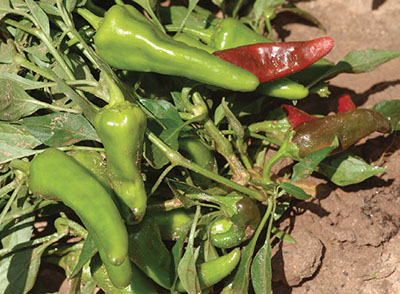Circular 679
Stephanie Walker and Charles Havlik
College of Agricultural, Consumer and Environmental Sciences, New Mexico State University
Authors: Respectively, Assistant Professor/Extension Vegetable Specialist, Department of Extension Plant Sciences; and Senior Research Assistant, Agricultural Science Center at Los Lunas, New Mexico State University. (Print friendly PDF)
Introduction
New Mexico is renowned throughout the world for producing chile peppers (Capsicum annuum). The development and release of 'New Mexico No. 9' in 1913 from the New Mexico School of Agriculture and Mechanical Arts (now New Mexico State University) introduced a standardized New Mexico-type chile cultivar that provided the foundation for the chile pepper processing industry in New Mexico and the United States. Since that time, many other commercial chile pepper cultivars have been released and continue to be widely grown (Coon et al., 2008). While these New Mexico commercial cultivars are the main type grown in the southern part of the state, in northern New Mexico many Native American Pueblo and Hispanic communities have long grown 'native chile,' also known as New Mexico landraces. Landrace is the term for a line of plants that have become adapted to a geographical area following more than 100 years of selection and seed saving (Zeven, 1989).
Although surviving written records indicate that chile pepper seed was first introduced to the New Mexico territory by Spanish explorers in the late 1580s, pre-Columbian trade routes suggest possible introduction before the arrival of the Spanish (Andrews, 1999). Written records document an introduction of chile pepper before the year 1600, indicating that the New Mexico landrace chile peppers were developed over a period of more than 400 years as seed was saved from ripe red fruit that had matured before the season's first freeze and from plants that survived local environmental stresses. The seed from landrace chiles was passed on from generation to generation, bringing forward genetic traits that allowed for adaptation to the unique growing conditions in northern NM.
'Chimayó', the chile pepper landrace from the small village of Chimayó, is the most well known of the New Mexico landraces; however, there are many other landraces associated with different communities. Many of the landraces are named after the geographical location where the seeds were collected, although within a community there may be many different varieties of 'Chimayó' or other landrace chile peppers. Some families or communities also maintain their own unique, specially named type of landrace chile pepper. In addition to 'Chimayó', some of the other known New Mexico landrace chile peppers are 'Alcalde', 'Casados Native', 'Cochiti Pueblo', 'Escondida', 'Estaceno', 'Hernandez', 'Isleta Pueblo', 'Jarales', 'Jemez Pueblo', 'Nambe Pueblo', 'San Felipe Pueblo', 'San Juan Pueblo', 'Santo Domingo Pueblo', 'Tesuque Pueblo', 'Velarde', and 'Zia Pueblo'.
Research conducted at New Mexico State University found that the northern New Mexico landraces are genetically unique compared to New Mexico-type commercial chile pepper cultivars, and more similar to chile pepper landraces from Mexico (Baral et al., 2005). The New Mexico landrace chile pepper plants and fruit are also distinct when compared to commercial New Mexico-type cultivars. The landrace plants tend to exhibit indeterminate, vine-like growth. The fruit size tends to be smaller, with a thinner pericarp (fruit wall), and the fruit tend to ripen earlier compared to commercial cultivars (Havlik, 2014).
The flavor and heat of the landraces are also prized by many chile pepper enthusiasts. The capsaicinoid chemicals that impart the heat (pungency) to chile pepper fruit are unique to chile peppers (members of the Capsicum genus), and are a major factor in the popularity of the crop. There are at least 22 different closely related capsaicinoids, with each providing a different sensation to the palate when eaten (DeWitt and Bosland, 2009). The two most abundant of these chemicals are capsaicin and dihydrocapsaicin. In the commercial New Mexico-type chile pepper cultivars, capsaicin is the most abundant capsaicinoid produced in the fruit, whereas New Mexico landrace chile peppers produce more dihydropcapsaicin (Rodriguez-Uribe et al., 2014). This unique complement of heat-producing chemicals likely contributes to the distinct qualities associated with New Mexico landrace chile peppers.
Sources of Landrace Chile Pepper Seed
While many families and communities maintain private, proprietary seed for their own respective New Mexico landrace, some New Mexico landrace chile pepper seed is available for purchase from various specialty seed companies. Variability, yield, and quality attributes can be affected by seed saving techniques, particularly if seed was produced from plants protected from cross-pollination with other chile pepper types with different characteristics and if individual plants were fixed for particular traits in the accession.
Seed for the New Mexico landrace chile peppers evaluated in the 2011-2013 trials was sourced from Native Seeds/SEARCH, headquartered in Tucson, Arizona (http://www.nativeseeds.org). This non-profit organization collects and maintains seed from traditional plant varieties from the southwestern United States and northern Mexico to ensure the long-term survival of unique genetic material.
Trials conducted at New Mexico State University's Agricultural Science Center in Los Lunas, NM, during the 2011-2013 seasons compared different types of New Mexico landrace chile peppers to commercial chile pepper cultivars widely grown in southern New Mexico. While the landrace chile peppers were more variable than the commercial cultivars in both physical and quality attributes, several were distinct in early maturity and heat level. Although fresh green yield was lower in the landrace chile peppers compared to the commercial cultivars, many of the landraces provided comparable dried red fruit yield (Table 1). Listed below are six exceptional New Mexico landrace chile peppers, and their relative yield and quality compared to 'Sandia', a frequently grown commercial chile pepper cultivar.
|
Table 1. Average Dry Red Fruit Yield, Extractable Red Pigment, Heat Level, and Fruit Size for New Mexico Landrace Chile Peppers ('Escondida', 'Jemez Pueblo', 'San Felipe Pueblo', 'Santo Domingo Pueblo', 'Velarde', 'Zia Pueblo') and a Commercial Chile Cultivar ('Sandia') Over the 2011-2013 Trials Conducted at NMSU's Agricultural Science Center at Los Lunas, NM |
|||||
|
Cultivar/Landrace |
Dry Fruit Yield (lb/ac) |
Extractable Pigment (ASTA)X |
Scoville Heat Units (SHU)y |
Fruit Length (in.) |
Fruit Width (in.) |
|
'Escondida' |
2,767 az |
108 a |
15,057 abc |
2.18 c |
0.65 c |
|
'Jemez Pueblo' |
2,216 a |
105 a |
11,940 abc |
2.40 c |
0.71 bc |
|
'San Felipe Pueblo' |
2,897 a |
104 a |
15,370 abc |
1.94 c |
0.68 bc |
|
'Santo Domingo Pueblo' |
2,394 a |
77 a |
16,969 ab |
3.00 b |
0.86 a |
|
'Velarde' |
1,843 a |
131 a |
9,619 bc |
2.40 c |
0.89 a |
|
'Zia Pueblo' |
2,370 a |
111 a |
20,547 a |
3.08 b |
0.81 ab |
|
'Sandia' |
1,973 a |
106 a |
5,694 c |
5.10 a |
0.92 a |
|
XExtractable pigment (ASTA) was measured through the American Spice Trade Association method 20.1. |
|||||
'Santo Domingo Pueblo'
Figure 1. 'Santo Domingo Pueblo' landrace chile pepper plant with fruit in Los Lunas, 2012.
Seed for this variety was originally sourced from the Santo Domingo Pueblo, or Khe-wa as it is known to its residents. The Santo Domingo Pueblo is located approximately 25 miles southwest of Santa Fe, NM. It served as a headquarters for the Spanish colonial missions, and was also a key location of Pueblo resistance against the Spanish settlers in the 1600s (Indian Pueblo Cultural Center, 2013). The 'Santo Domingo Pueblo' landrace chile pepper (Figure 1) was one of the earliest maturing lines, producing a greater ratio of red fruit compared to immature green fruit at harvest when compared to the commercial cultivar in all trial years (Havlik, 2014).
'Jemez Pueblo'
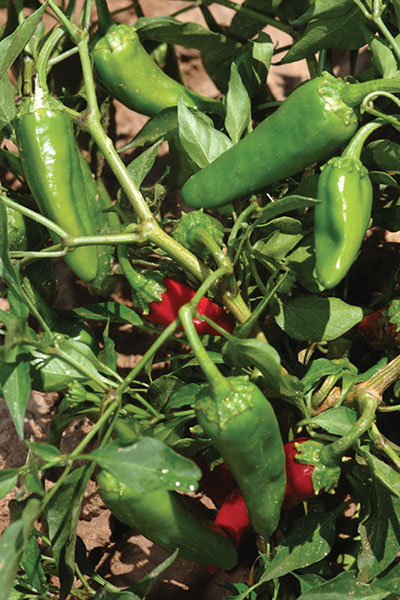
Figure 2. A 'Jemez Pueblo' landrace chile pepper plant with fruit in Los Lunas, 2012.
The Pueblo of Jemez is a federally recognized American Indian tribe with 3,400 tribal members, most of who reside in the village known as Walatowa (a Towa word meaning 'this is the place'). The community is located approximately 55 miles northwest of Albuquerque, NM (Pueblo of Jemez, 2016). Farmers of the Jemez Pueblo save seeds from all the native chile pepper fruit year after year, generation after generation. Traditionally, several seeds are placed in each planting hole, equaling about a teaspoon of seed. Manure is often mixed with the chile pepper seed at planting to provide fertilization (Havlik, 2014). 'Jemez Pueblo' (Figure 2) exhibited the earliest maturity of the New Mexico landrace chile peppers, producing the highest ratio of red ripe to green immature fruit of all the landraces evaluated at the Los Lunas Agricultural Science Center.
'Escondida'
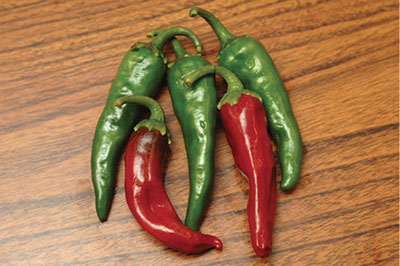
Figure 3. Fruit of the 'Escondida' landrace chile pepper.
'Escondida' Spanish for 'hidden' is a small village south of Socorro, NM. There is very little additional information regarding the village of Escondida. It appeared in the 1860 U.S. Census as La Escondida, but then was not mentioned again for 25 years. There is also an inhabited settlement of the same name north of Socorro that established a post office in 1903, but the connection between the two towns is unknown (Julyan, 1996). Although it is not known which of these communities was the original source of 'Escondida' chile pepper, either location makes this accession the southernmost New Mexico landrace chile pepper. Recent visits to these areas failed to locate any current chile pepper production, so although seed can still be sourced from Native Seeds/SEARCH, the 'Escondida' landrace chile pepper (Figure 3) has ceased to be grown in its place of origin.
'Velarde'
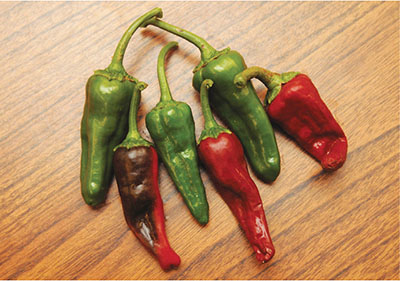
Figure 4. Fruit of the 'Velarde' landrace chile pepper.
The village of Velarde is located in Rio Arriba County approximately 40 miles north of Santa Fe, NM. Velarde is situated at 6,300 ft above sea level, which makes 'Velarde' the landrace chile pepper from the highest elevation. The community is also the northernmost of the landrace chile peppers. 'Velarde' (Figure 4) was not as hot as some of the other New Mexico landrace chile peppers evaluated, and was closest to the hot commercial cultivar 'Sandia' in Scoville Heat Units (SHU; Table 1).
'Zia Pueblo'
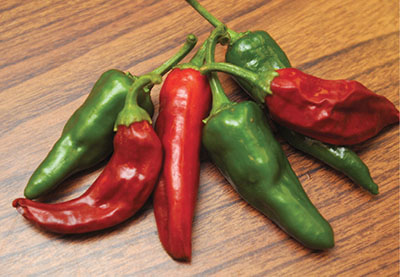
Figure 5. Fruit of the 'Zia Pueblo' landrace chile pepper.
Zia Pueblo was once one of the largest of the Rio Grande pueblos, with eight plazas and 6,000 inhabitants. The pueblo has since decreased in size to a population today of about 646. This Keres-speaking pueblo is situated near the Jemez River atop a small mesa that provides an impressive view of the surrounding areas (Indian Pueblo Cultural Center, 2013). The 'Zia Pueblo' landrace chile pepper (Figure 5) was the hottest accession of the landraces. The SHU level averaged 25,329, 20,555, and 15,756 in 2011, 2012, and 2013, respectively, at the Los Lunas Agricultural Science Center (Havlik, 2014). As a comparison, heat level for a typical jalapeño ranges between 2,500 to 10,000 SHU (DeWitt and Bosland, 1993).
'San Felipe Pueblo'

Figure 6. A 'San Felipe Pueblo' landrace chile pepper plant with fruit in Los Lunas, 2012.
Kay-tichi-tya is the traditional name for the San Felipe Pueblo. It is located 25 miles north of Albuquerque, NM, and is one of the more culturally conservative of the pueblos. As such, they have proactively maintained their language, Keres, through oral tradition (Fugate and Fugate, 1989). The people of San Felipe Pueblo consider their landrace to be a family or community chile pepper. Seed is saved from red, ripe fruit every season. Through these efforts, their landrace chile pepper is adapted to thrive under local environmental conditions, such as drought, disease, and pest pressures (Havlik, 2014). Notably, the 'San Felipe Pueblo' landrace chile pepper (Figure 6) provided the highest average dried red fruit yield in the Los Lunas, NM, trials, although the difference was not significant compared to other accessions evaluated (Table 1).
Conclusion
New Mexico landrace chile peppers contribute to the cultural identity of many communities in northern New Mexico. However, New Mexico landrace chile is threatened from a variety of issues, including cross-pollination from other C. annuum cultivars, economic issues resulting in some of the farmers moving out of farming altogether, and the loss of arable farmland in northern New Mexico. Public and community awareness and appreciation of these unique accessions of chile pepper is critical for their preservation. The members of these communities are encouraged to continue stewardship of these chile pepper landraces so that they can be enjoyed by current and future generations.
Literature Cited
Andrews, J. 1999. The pepper trail: History and recipes from around the world. Austin: University of Texas Press.
Coon, D., E. Votava, and P.W. Bosland. 2008. The chile cultivars of New Mexico State University released from 1913 to 2008 [Research Report 763]. Las Cruces: New Mexico State University Agricultural Experiment Station.
DeWitt, D., and P.W. Bosland. 1993. The pepper garden. Berkeley, CA: Ten Speed Press.
DeWitt, D., and P.W. Bosland. 2009. The complete chile pepper book. Portland, OR: Timber Press.
Fugate, F.L., and R.B. Fugate. 1989. Roadside history of New Mexico. Missoula, MT: Mountain Press Publishing Company.
Havlik, C. 2014. Determination of early season maturity indices in New Mexico landrace chile (Capsicum annuum L.) [Master's Thesis]. Las Cruces: New Mexico State University.
Indian Pueblo Cultural Center. 2013. 19 pueblos [Online]. Available from http://www.indianpueblo.org/19-pueblos/pueblos/
Julyan, R. 1996. The place names of New Mexico. Albuquerque: University of New Mexico Press.
Pueblo of Jemez. 2016, February 13. Retrieved from http://www.jemezpueblo.org/
Rodriguez-Uribe, L., L. Hernandez, J.P. Kilcrease, S. Walker, and M.A. O'Connell. 2014. Capsaicinoid and carotenoid composition and genetic diversity of Kas I and Ccs in New Mexican Capsicum annuum L. landraces. HortScience, 49, 1370'1375.
Votava, E.J., J.B. Baral, and P.W. Bosland. 2005. Genetic diversity of chile (Capsicum annuum var. annuum L.) landraces from northern New Mexico, Colorado, and Mexico. Economic Botany, 59, 8'17.
Zeven, A.C. 1998. Landraces: A review of definitions and classifications. Euphytica, 104, 127'139.
For Further Reading
H-230: Growing Chiles in New Mexico
http://pubs.nmsu.edu/_h/H230/
Circular 457: Home Vegetable Gardening in New Mexico
http://pubs.nmsu.edu/_circulars/CR457/
Circular 549: Chile Pepper Diseases
http://pubs.nmsu.edu/_circulars/CR549/

Stephanie Walker is Extension Vegetable Specialist, and has extensive experience in the food processing industry. Her primary research interests include genetics and breeding of chile peppers, vegetable mechanization, enhancing pigment content, post-harvest quality, and irrigation efficiency. She works to help commercial vegetable growers enhance the sustainability and profitability of their operations through collaboration, experimentation, and information sharing.
To find more resources for your business, home, or family, visit the College of Agricultural, Consumer and Environmental Sciences on the World Wide Web at pubs.nmsu.edu
Contents of publications may be freely reproduced for educational purposes. All other rights reserved. For permission to use publications for other purposes, contact pubs@nmsu.edu or the authors listed on the publication.
New Mexico State University is an equal opportunity/affirmative action employer and educator. NMSU and the U.S. Department of Agriculture cooperating.
June 2016


